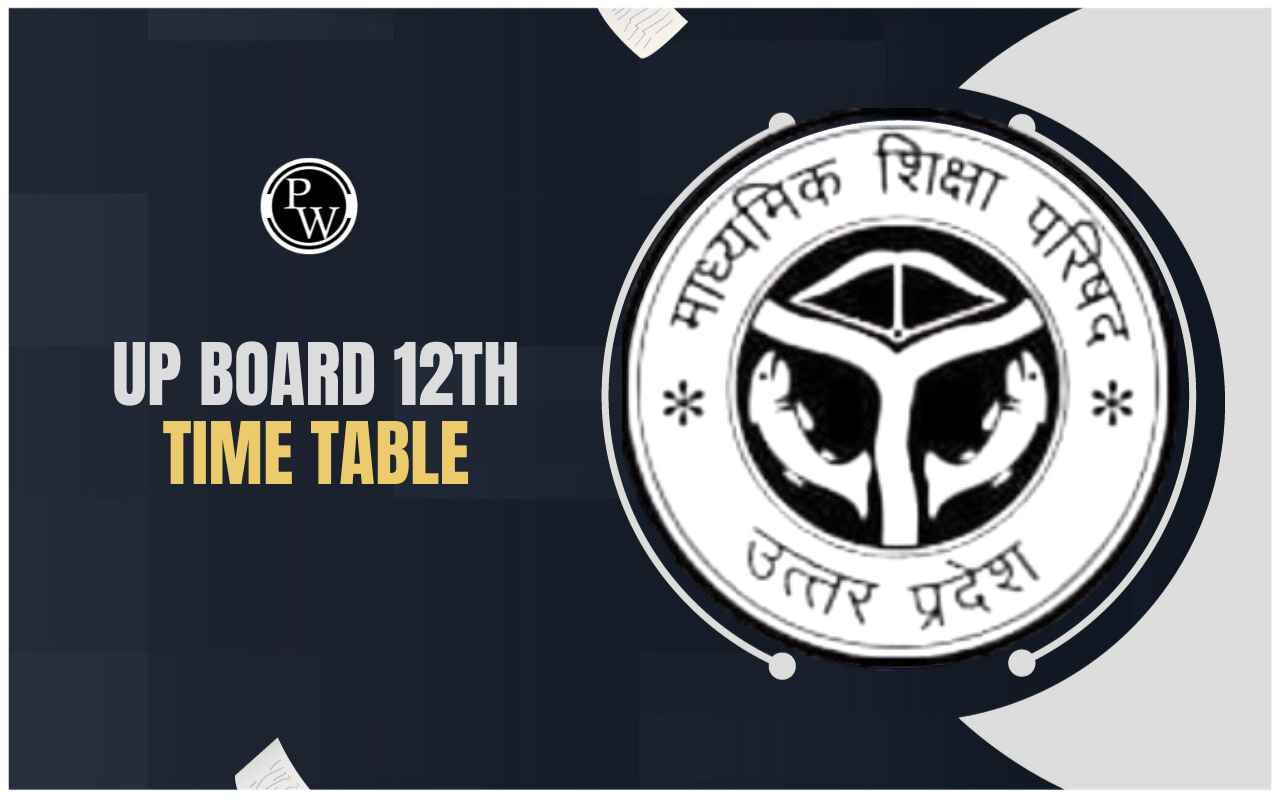

UP Board Class 9th Exam Pattern 2025-26: For the academic year, the Uttar Pradesh Madhyamik Shiksha Parishad (UPMSP) includes a comprehensive exam pattern for Class 9 that balances academic knowledge with continuous assessment. The examination is divided into two key components: a written exam and an internal assessment.
While the written exam focuses on evaluating a student’s conceptual understanding, logical reasoning, and problem-solving abilities, the internal assessment emphasizes consistent performance through class tests, assignments, projects, and participation.
UP Board Class 9th Exam Pattern 2026 Overview
To help students prepare more effectively, the UP Board has provided a clear structure for the Class 9 examination. This includes detailed weightage for written and internal components, along with the types of questions students can expect. Below is the UP Board Class 9th Exam Pattern 2026 overview:
|
UP Board Class 9th Exam Pattern 2026 Overview |
|
|
Particulars |
Details |
|
Board |
Uttar Pradesh Madhyamik Shiksha Parishad (UPMSP) |
|
Class |
9th |
|
Academic Year |
2025–26 |
|
Exam Type |
Annual + Internal Assessment |
|
Total Marks |
100 Marks |
|
Question Types |
Objective, Short Answer, Long Answer |
|
Assessment Areas |
Periodic Tests, Homework, Activities, Presentations |
UP Board Class 9th Exam Pattern 2025-26
The UP Board Class 9 examination is divided into two key sections: Written Exam (70 Marks) and Internal Assessment (30 Marks). Here's an explanation of the types of questions included in the curriculum:
The written paper comprises three types of questions:
-
Objective Type Questions
-
Short Answer Type Questions
-
Long Answer Type Questions
These types of questions help check how well students remember facts, understand the topics, and explain their answers clearly. It gives everyone a fair chance to show what they’ve learned in different ways.
Students are also evaluated throughout the year based on:
-
Periodic Tests
-
Projects & Mathematical Activities
-
Assignments & Homework
-
Class Participation & Presentations
These activities help teachers assess how actively students are learning beyond just the written exam. It also encourages students to stay consistent, complete their work on time, and take part in classroom discussions and activities.
UP Board Class 9th Exam Pattern 2026 Subject-Wise
Each subject in Class 9 under the UP Board follows a structured exam format that balances theory-based questions with internal assessment. While the written exams evaluate conceptual clarity and writing skills, internal marks reward consistent classroom performance and participation.
You must also go through the UP Board Class 9th syllabus in order to prepare for the academic exams. Here is the UP Board Class 9th exam pattern 2026 subject-wise:
UP Board Class 9th Maths Exam Pattern 2026
Mathematics focuses on understanding concepts, solving numerical problems, and applying logic. The questions test step-by-step calculations as well as problem-solving skills.
The Maths exam follows a UP Board class 9 syllabus for Maths:
-
Numerical problems (long and short)
-
Concept-based questions (objective type)
-
Step-wise solutions carry marks
Internal assessment may include:
-
Weekly class tests
-
Project work on real-life maths application
-
Mental ability worksheets
-
Class activities like quizzes or charts
UP Board Class 9th Science Exam Pattern 2026
Science tests students on theory, application, and practical knowledge. Diagrams, concepts, and reasoning are key parts of the exam.
Science paper includes:
-
Diagram-based questions
-
Concept explanation (long answer)
-
Reasoning-type MCQs or short answers
Internal marks are based on:
-
Lab activities and write-ups
-
Experimental project reports
-
Chapter-end class tests
-
Classroom discussions
UP Board Class 9 syllabus for Science
UP Board Class 9th Social Science Exam Pattern 2026
This subject includes History, Geography, Civics, and Economics. The paper tests understanding of facts, analytical thinking, and presentation skills.
The Social Science paper has:
-
Objective-type factual questions (History/Geography)
-
Map work (Geography)
-
Descriptive answer writing (Civics/Economics)
Internals include:
-
Map exercises and timelines
-
Assignments on topics like local governance, environmental projects
-
Short presentations or debates
UP Board Class 9 syllabus for Social Science
UP Board Class 9th Hindi Exam Pattern 2026
Hindi paper assesses grammar, comprehension, and literary understanding. Equal focus is given to reading and writing skills.
In Hindi, the paper consists of:
-
Grammar-based objective questions
-
Passage comprehension
-
Long and short answers from prose/poetry
Internal marks include:
-
Daily language usage exercises
-
Creative writing tasks
-
Oral recitation
-
Spelling/vocabulary tests
UP Board Class 9th English Exam Pattern 2026
English focuses on language skills, literature, and communication. Students are tested on comprehension, grammar, and expressive writing.
English written exam includes:
-
Grammar-based fill-in-the-blanks or error correction
-
Reading comprehension passages
-
Essay/letter writing
-
Literature-based short/long answers
Internal assessment may cover:
-
Listening and speaking activities
-
Vocabulary building tasks
-
Dictation and paragraph writing
-
Group presentations on story summaries
UP Board Class 9th Sanskrit Exam Pattern 2026
Sanskrit includes grammar, translation, and understanding of prose and poetry. It encourages retention of traditional language structure.
Sanskrit paper includes:
-
Shabda roop and dhatu roop-based questions
-
Grammar translation
-
Prose and verse explanation (short and long answers)
Internal evaluation could include:
-
Shloka recitation
-
Sanskrit handwriting
-
Group grammar activities
-
Worksheets or presentations
UP Board 9th Exam Preparation Tips
Importance of Understanding the UP Board Class 9th Exam Pattern 2026
It is important for students to understand the exam pattern as it not only helps in proper preparation but also helps in understanding how marks are divided, what types of questions to expect, and how internal assessments are done. Here’s why understanding the pattern plays an important role in scoring well:
-
Once you know how many marks are assigned to which type of questions, you can allocate study time accordingly. For example, focusing more on long answers for subjects like Social Science, or practicing numerical speed for Maths.
-
Knowing about the exam pattern helps in avoiding confusion. When you already know about the question types, you know how to prepare. Whether it’s a short grammar question or a diagram-based answer, you can approach it with more confidence.
-
It’s easy to ignore internal marks, but don’t make that mistake. 30% of your final score comes from internal assessment which includes activities like assignments, class tests, and activities. Even if your written exam doesn’t go perfectly, scoring well in internals can really help you get overall good marks.
-
Since internal assessments are spread throughout the year, understanding the pattern helps in consistent effort rather than last-minute cramming.
-
By targeting each section i.e., objective, short, long answer, and internal, you can score well. Practice MCQs for speed, short answers for clarity, and long answers for detailed explanation.
UP Board Class 9th Exam Pattern 2025-26 FAQs
What is the exam pattern of UP Board Class 9th for 2026?
Is there any internal assessment in Class 9 under UP Board?
What types of questions are asked in the Class 9 UP Board exam?
Are UP Board Class 9 exams based on NCERT books?
How are internal marks given in UP Board Class 9?













